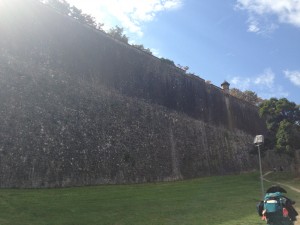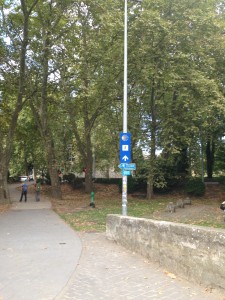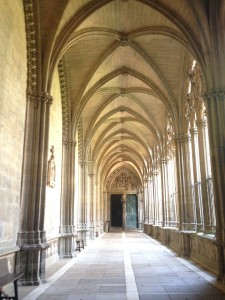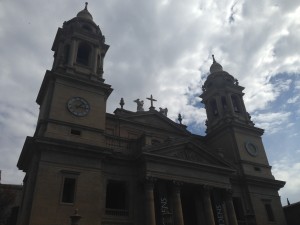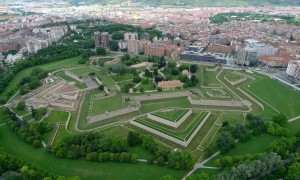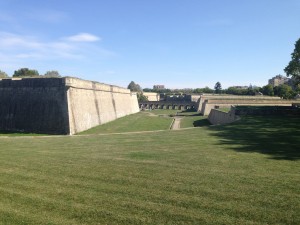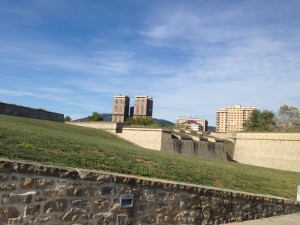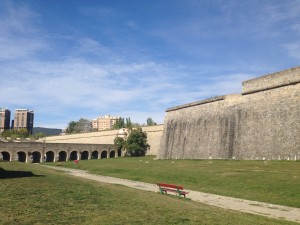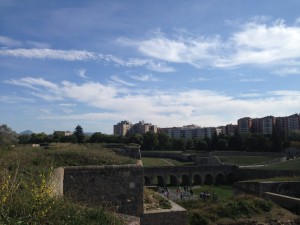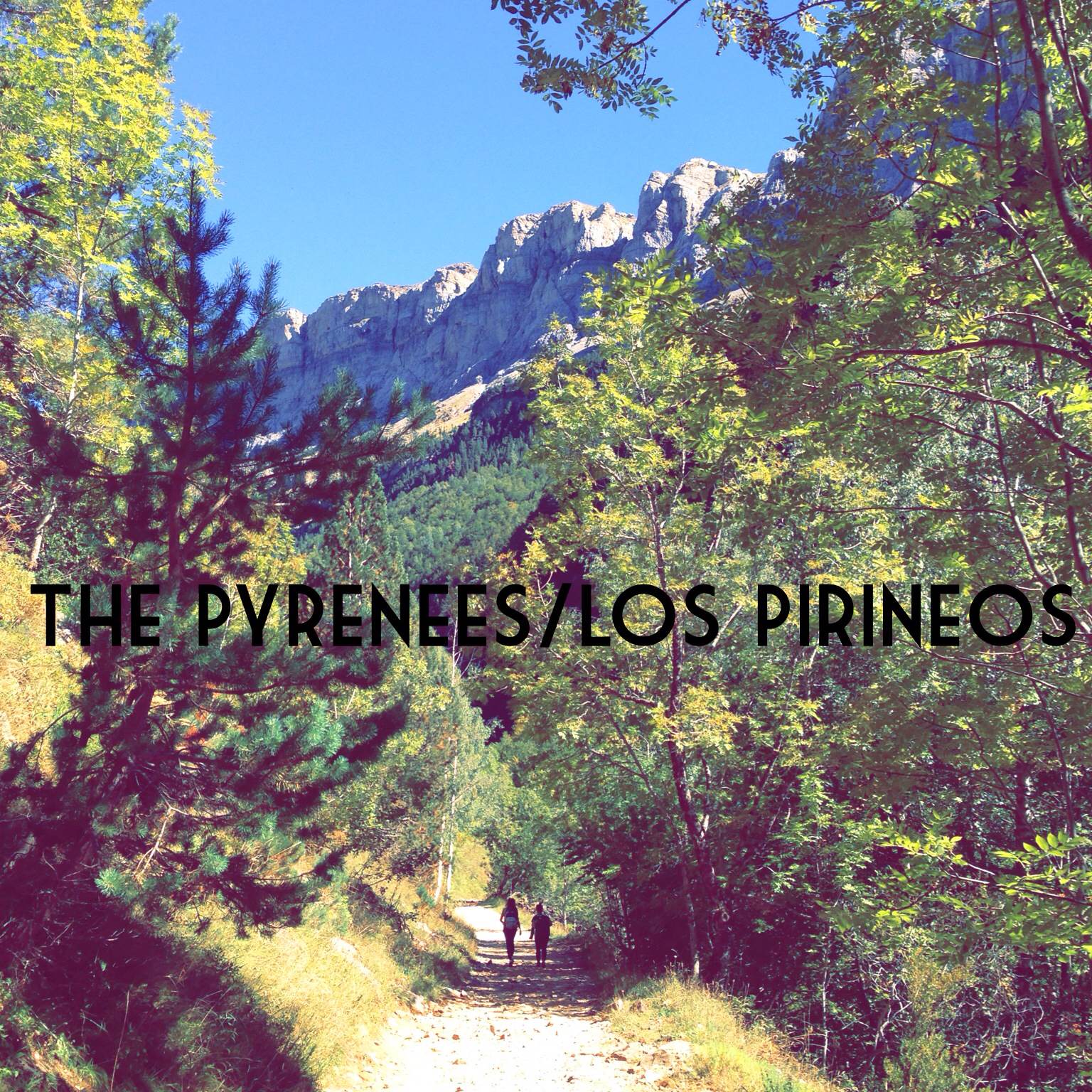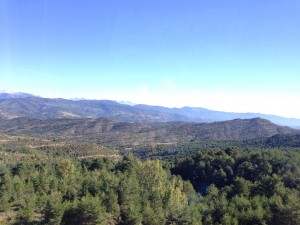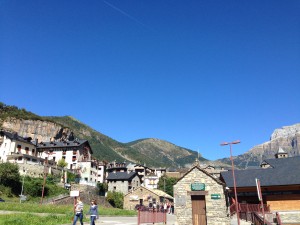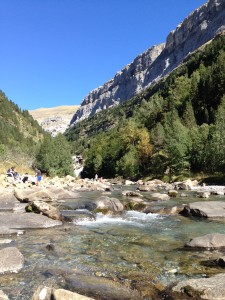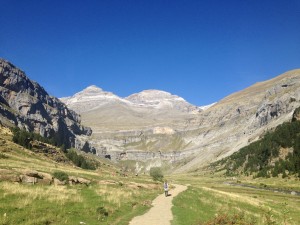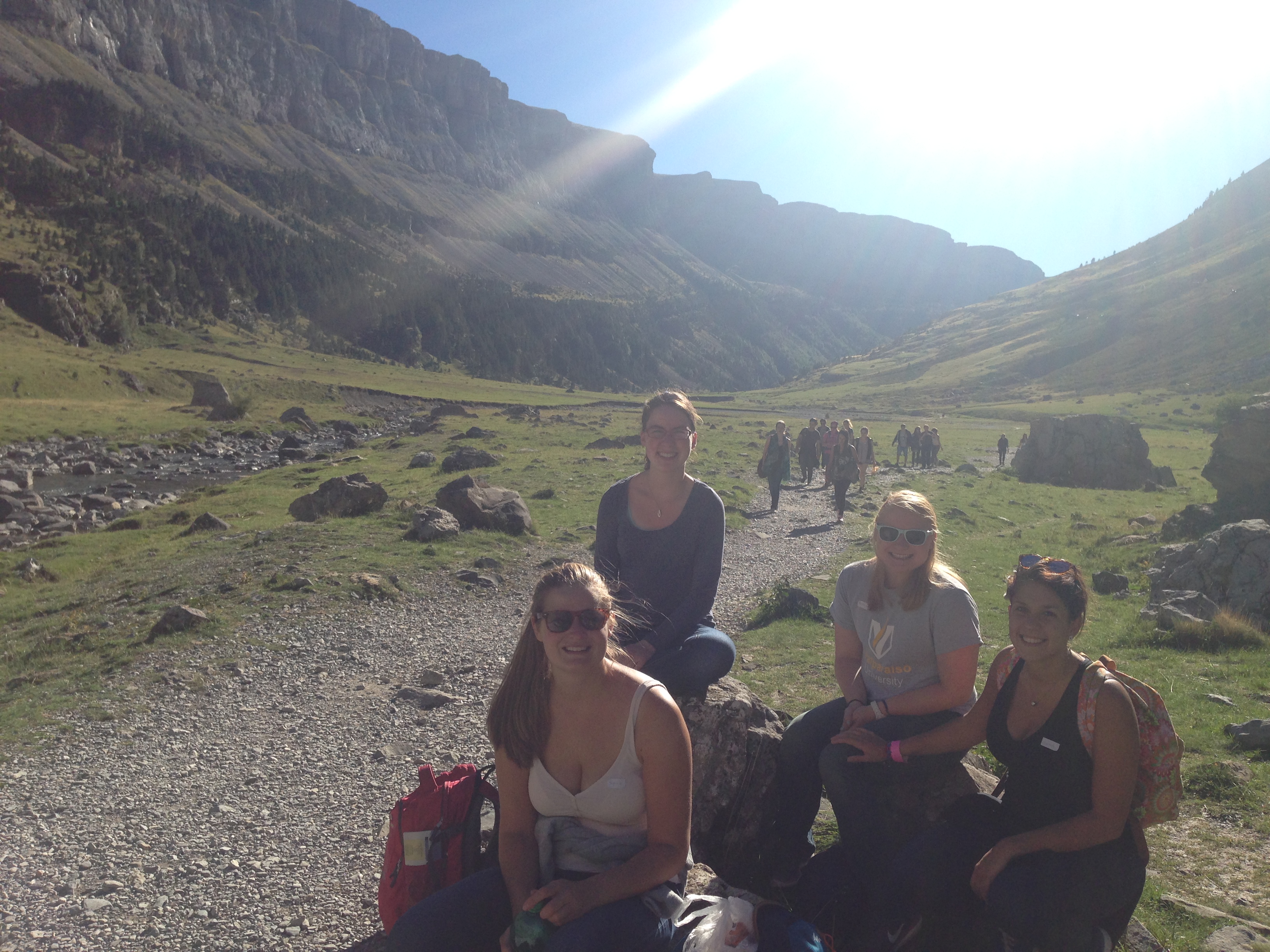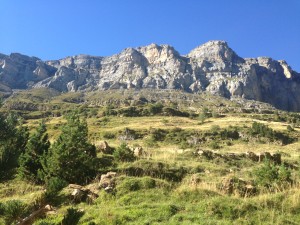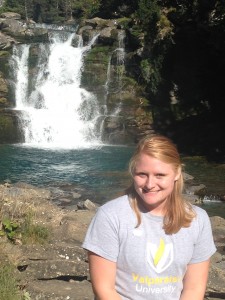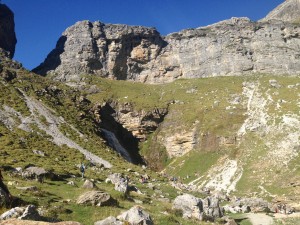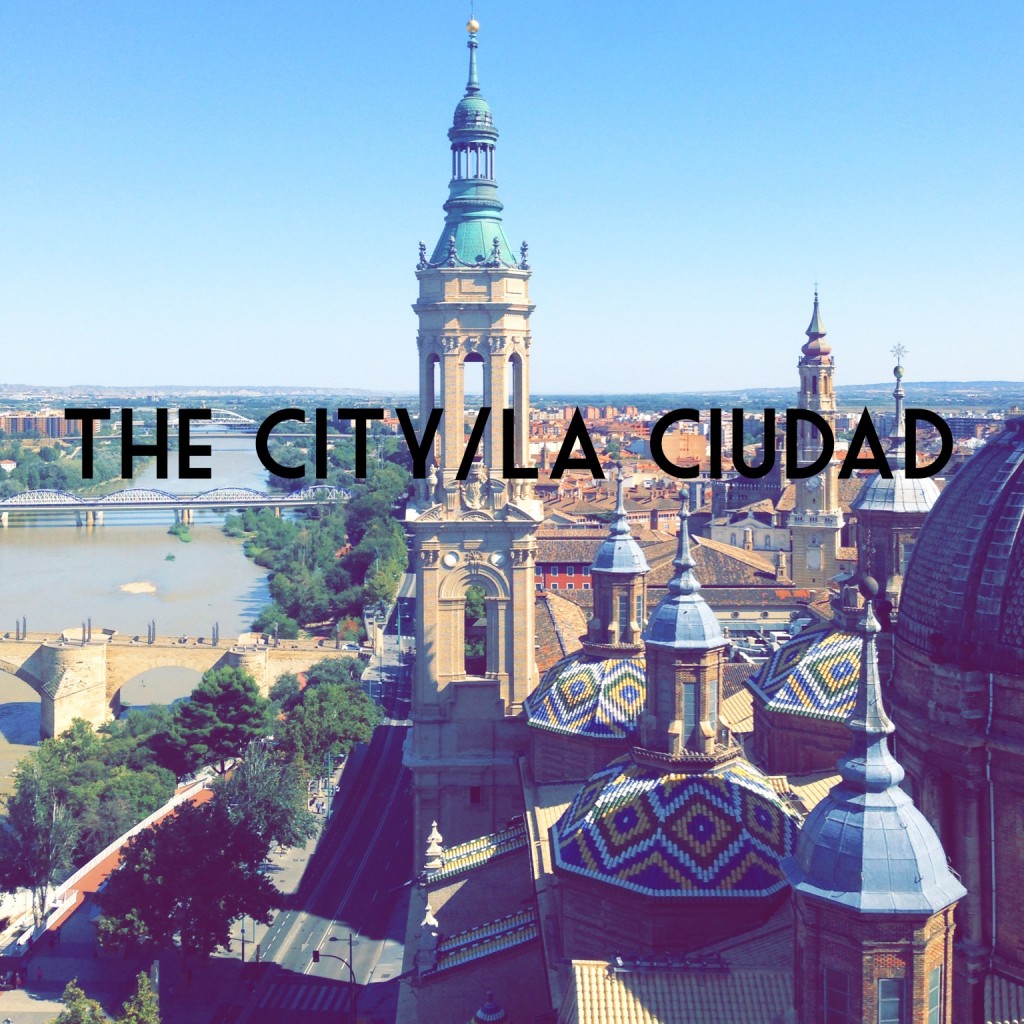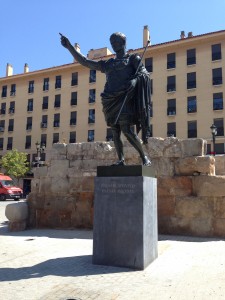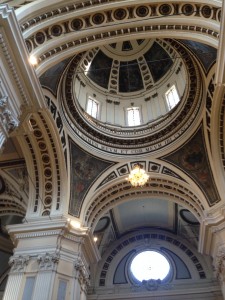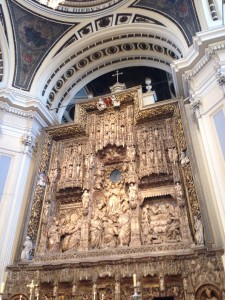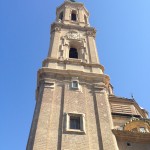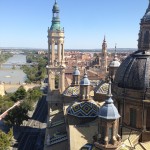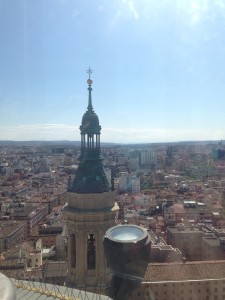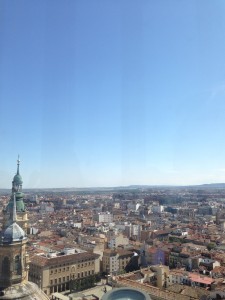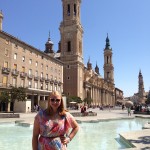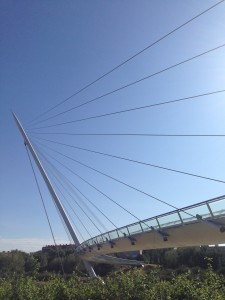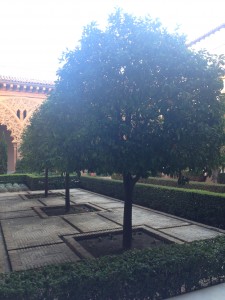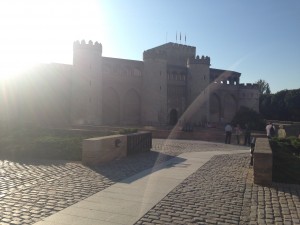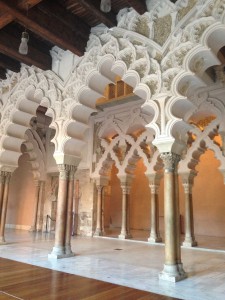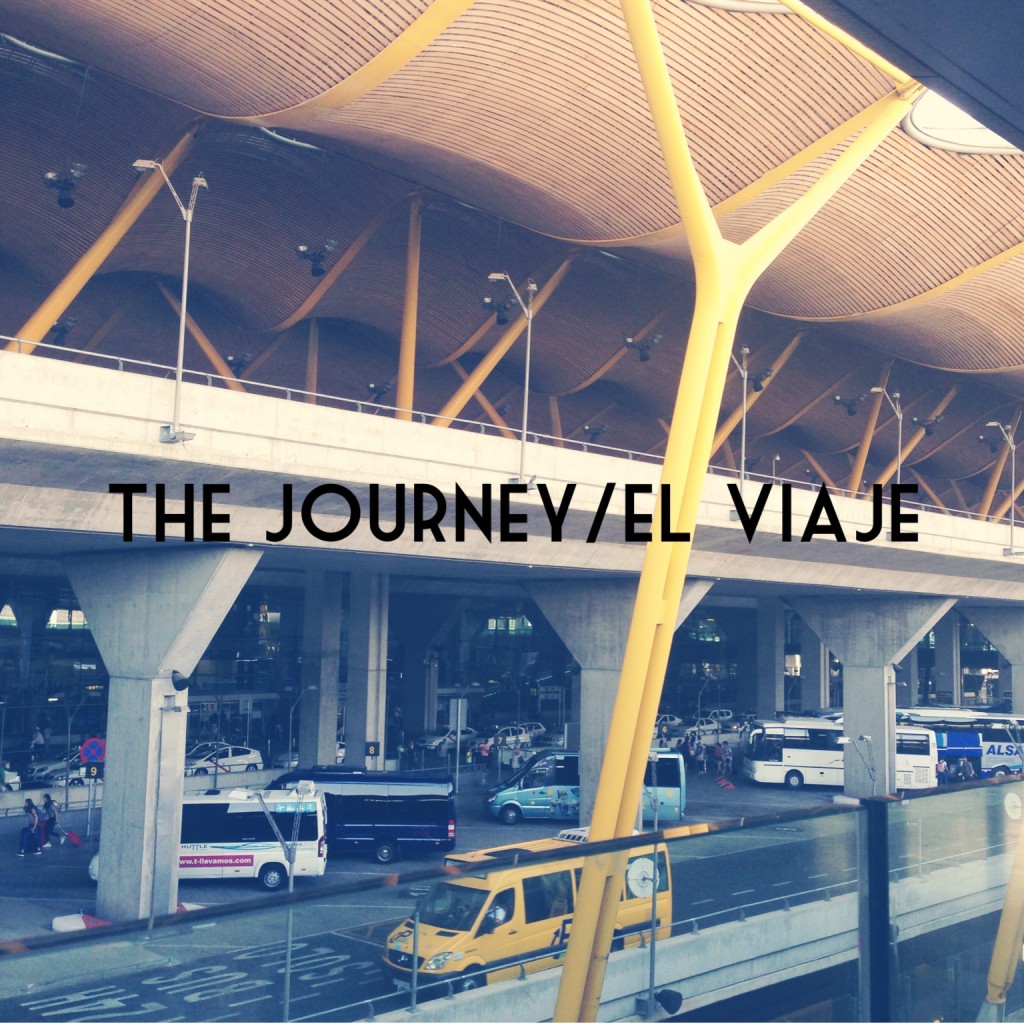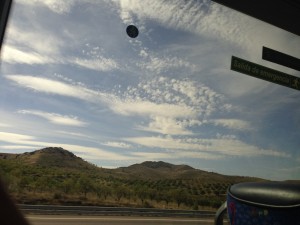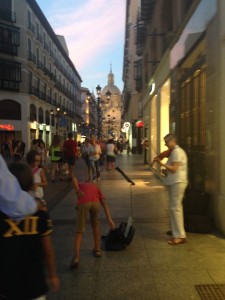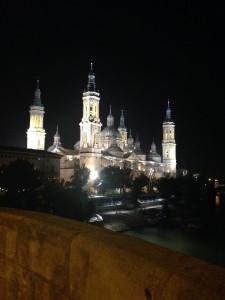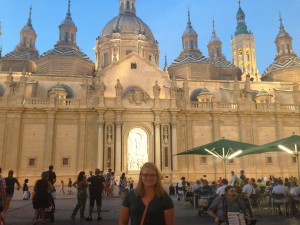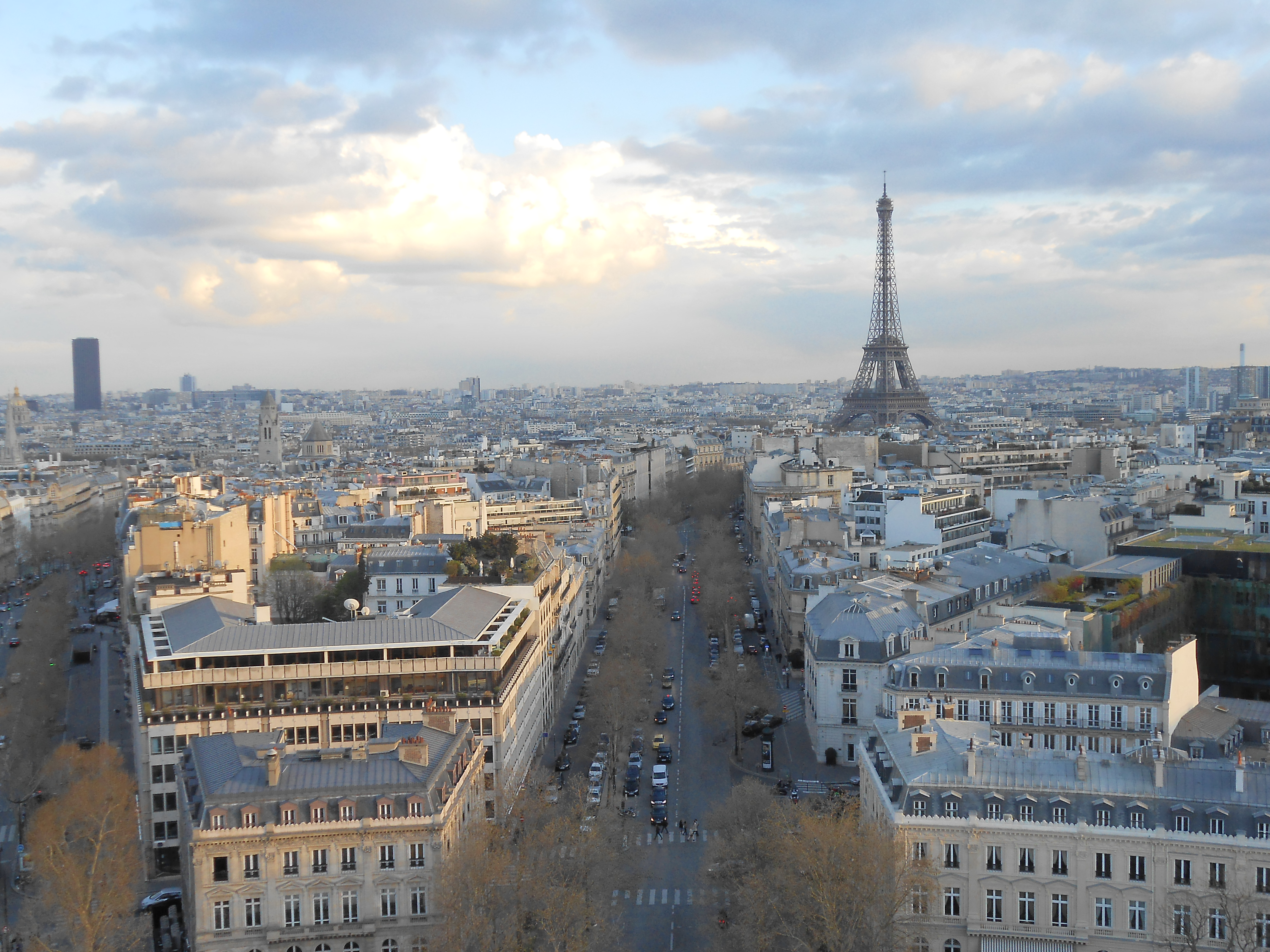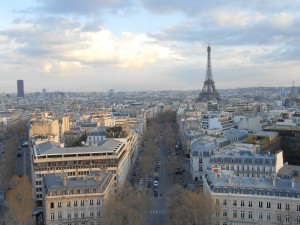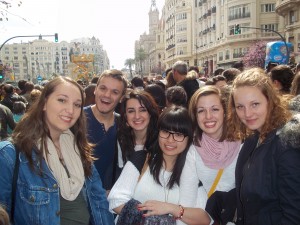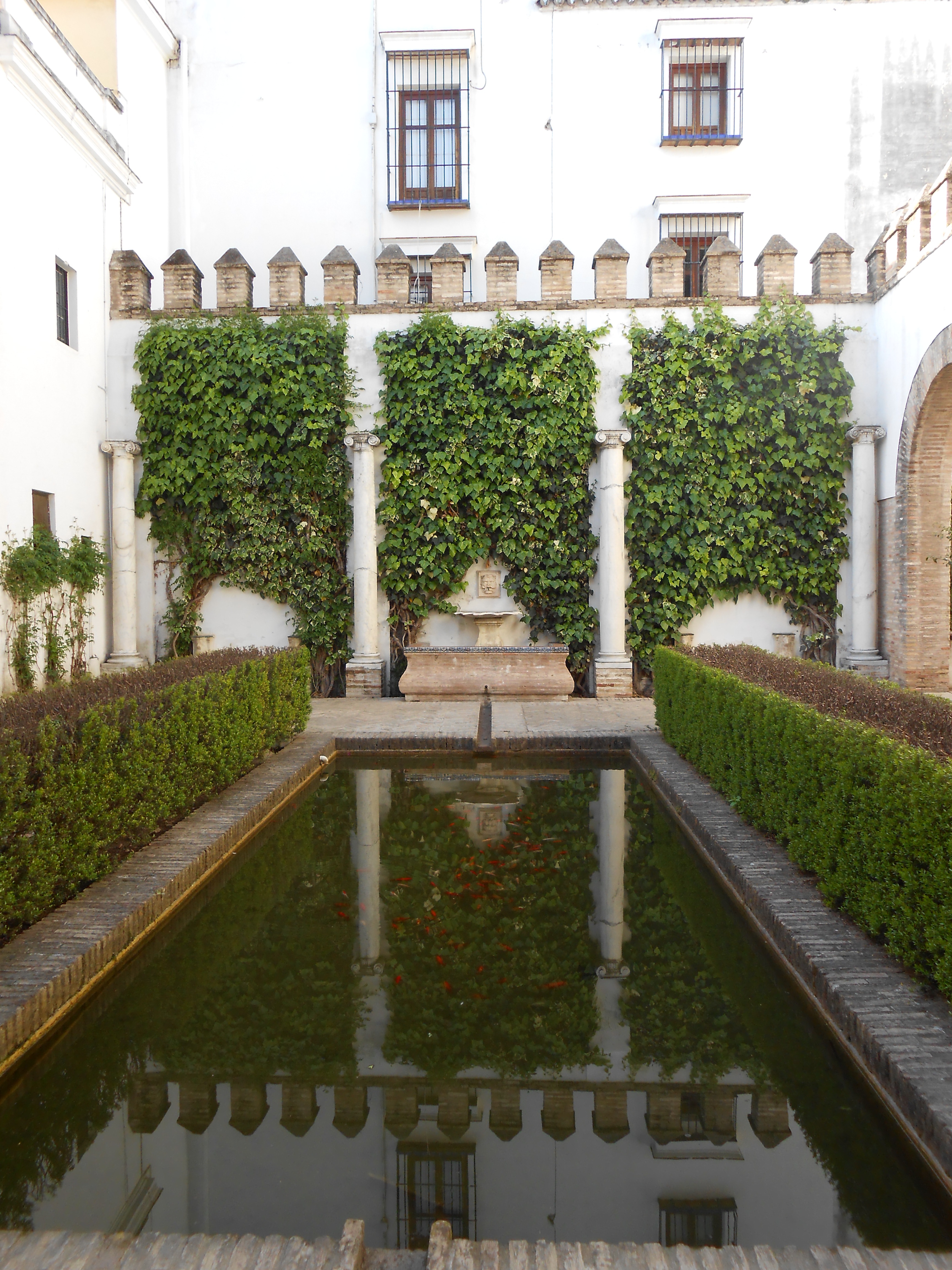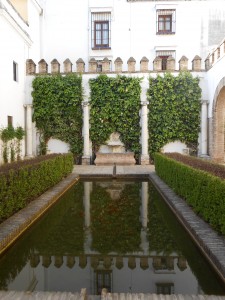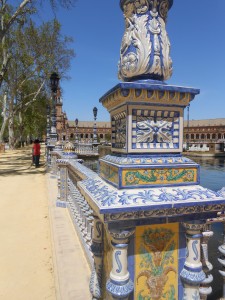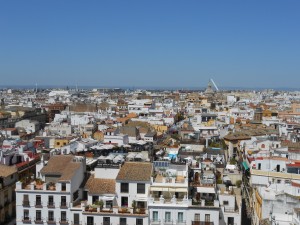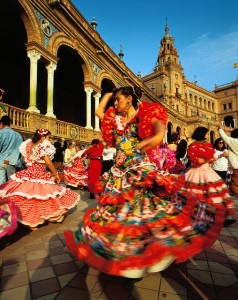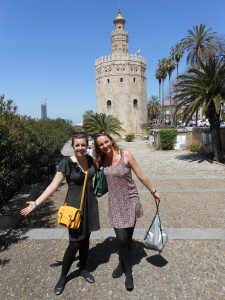One of the best things about living with a host family while abroad is that you can experience traditional meals all the time. Actually, this really depends on your particular host family and I have been very lucky as my host mom loves to cook. I have enjoyed many Spanish dishes thanks to her and have even learned a little bit of cooking also.
When I told people I was going to study abroad in Spain, there were a few comments like “I hope you like tacos!” Let me tell you that Spain does not have Mexican food. Yes, Spain obviously speaks Spanish, but just because the language is the same in Latin America does not mean the food is the same. I have not had a single taco while I’ve been here simply because tacos are not Spanish. Since Spain is almost surrounded by the sea (except for France to the north and Portugal to the west), the Spanish eat a lot of seafood.
I have had tortilla de patatas and paella plenty of times because these are Spain’s two most famous dishes. Tortillas de patatas are definitely not the tortillas you are thinking about. Tortilla de patatas is sort of like an omelette. It is a mixture of eggs, thinly sliced potatoes, and sometimes onions. First the potatoes and onions are fried in a pan, and then the eggs are added to the mix and it all gets fried again. Some people also like to add spinach, zucchini, or other vegetables. It can be eaten warm or cold, in a sandwich or without. This is definitely one of my favorite dishes and it’s not hard to make!
The other most famous Spanish dish is paella. I describe this dish as sort of like a stir fry, but with a different taste. It has short grain rice, is yellow, and is cooked with saffron. The traditional form of this dish has vegetables and seafood, but there are so many different variations of paella that almost anything goes. Valencia is the home to paella and Valencian paella has rabbit and chicken in it. I did try this paella when visiting Valencia, and it really is great. There are over a hundred types of paella as each region, family, and restaurant has their own special recipe. Paella is often served with a lemon to squeeze over the rice. Traditionally, paella is a Sunday meal that families share together. My host mom does often make this on Sundays which I am extremely thankful for. Fideos is just like paella, but it is with tiny noodles instead of rice.
One of the most famous desserts in Spain would have to be churros with chocolate. Yes, my host mom even makes the chocolate for this also! I have only bought this delicacy one time but I’ve had it multiple times as she likes to make it when it’s really cold out. The churros part is basically fried dough with sugar and the chocolate is melted, rich goodness that can be enjoyed either hot or cold.
The ham in Spain is almost a way of life. Jamón ibérico (referring to the Iberian Peninsula which is Spain and Portugal) is very famous and rightfully so. This ham has so much more flavor than any ham I’ve had in the US. In my opinion, the best way to savor this ham is with tomato and bread. My host mom usually crushes fresh tomatoes, spreads it on fresh bread, and add slices of this delicious ham. Back home, ham is not my favorite meat, so when I came here, I had no idea that I would like ham as much as I do now.
Gazpacho is a tomato soup that is served cold. It’s very popular in the summertime because it’s refreshing, but getting past having cold soup was a little hard for me. Garlic and cucumber are also included along with other various vegetables. It’s not bad, but it’s not my favorite.
Cocido madrileño is Madrid’s famous dish which is enjoyed by others all around Spain. It is a stew with garbanzo beans, sausage, ham, chicken, and vegetables. Like paella, there are variations, but this stew is great on a cold day.
Finally, the calamari sandwich is also surprisingly popular. In Madrid, there were plenty of restaurants with the calamari sandwich and beer special. It is just fried calamari on bread. Some people like to add mayonnaise so it’s not so dry. It really does not seem like this sandwich would be good, but it actually is. Usually it is accompanied with beer.
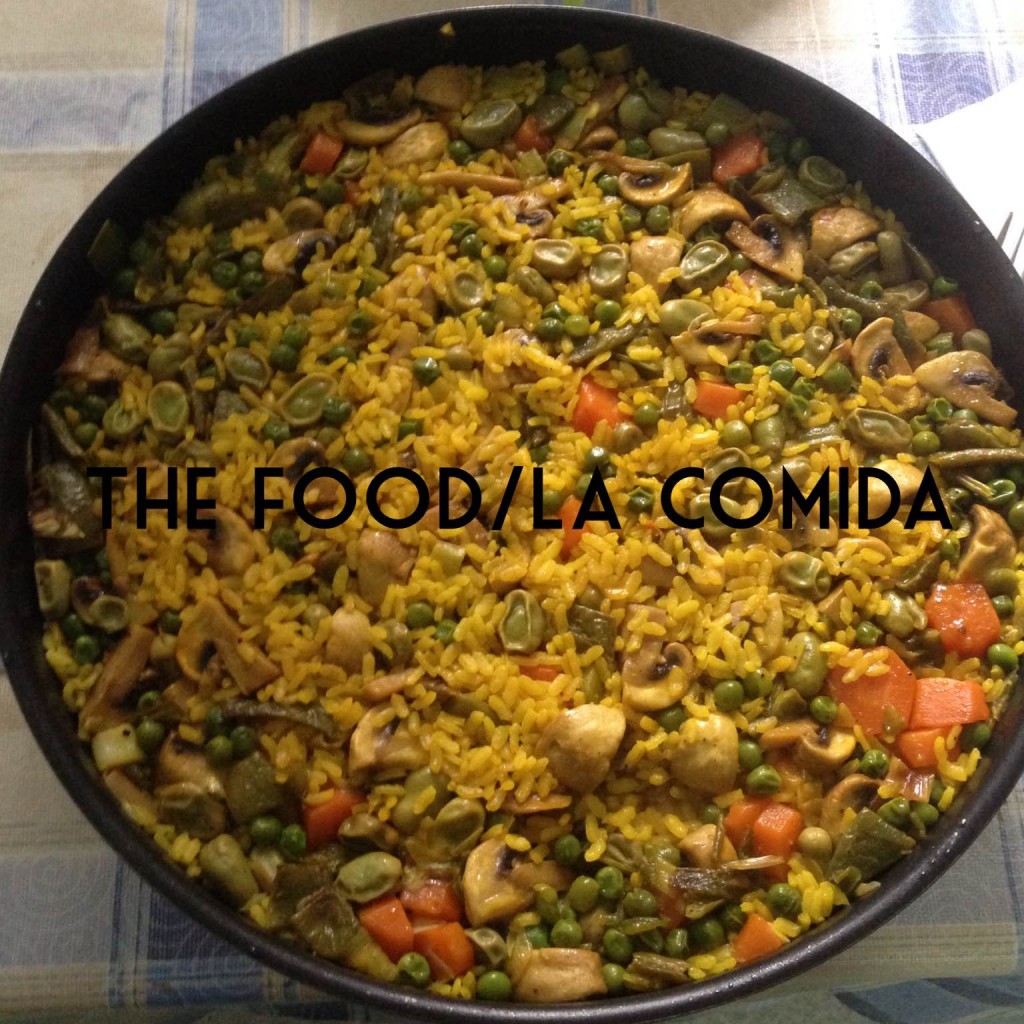
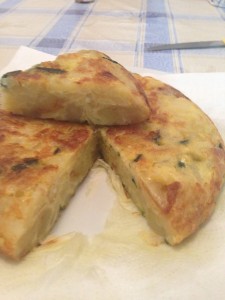
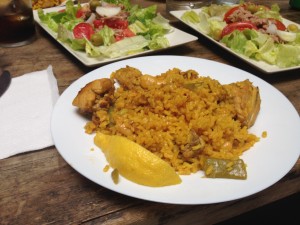
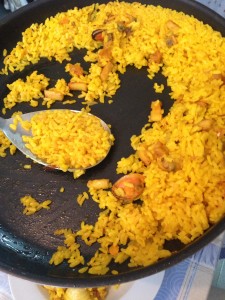
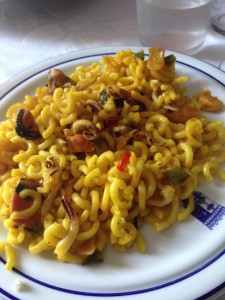
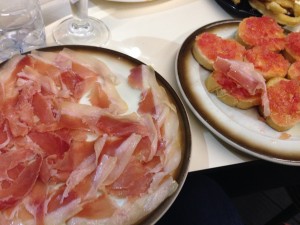
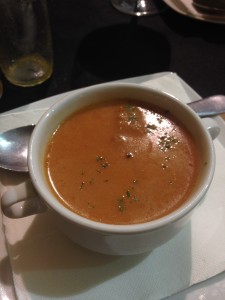
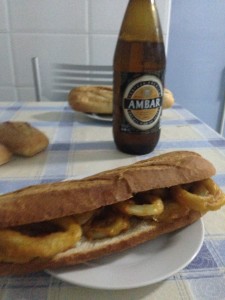
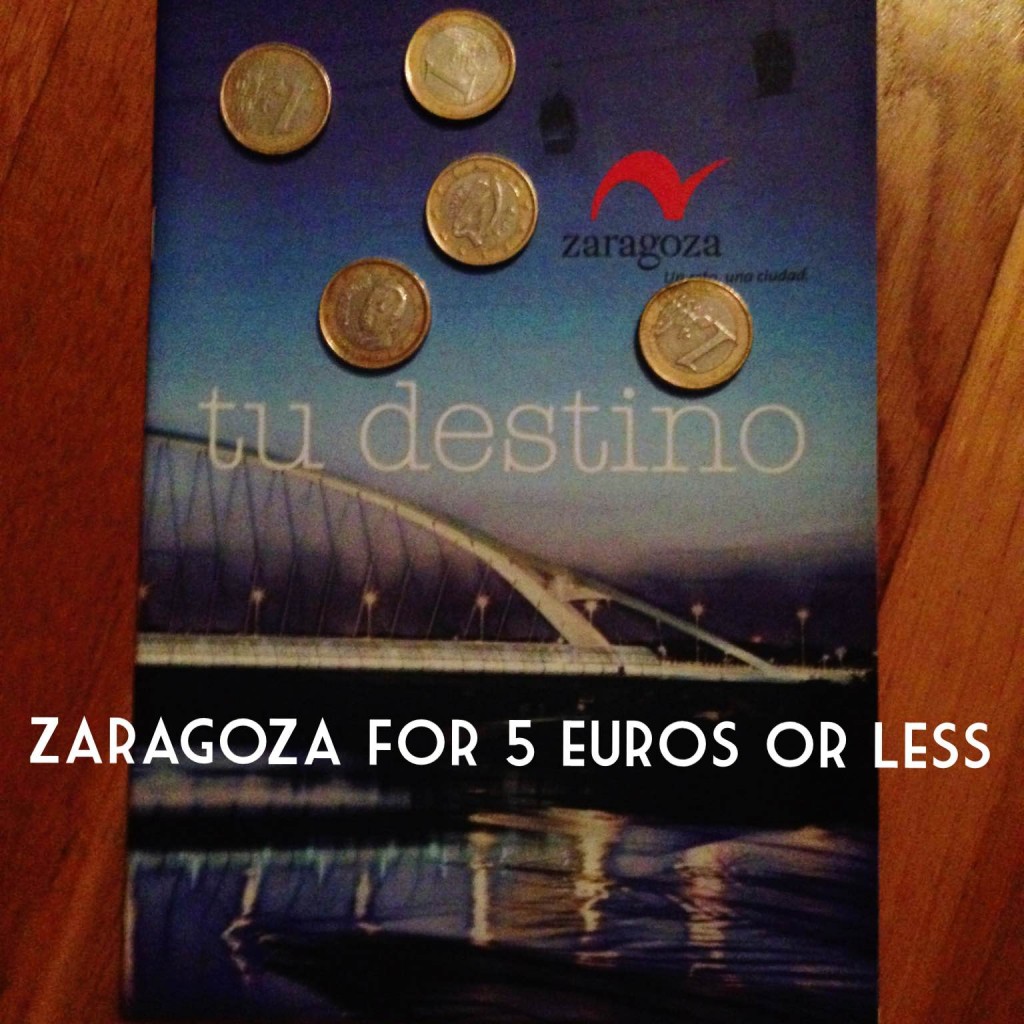
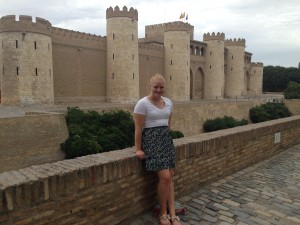
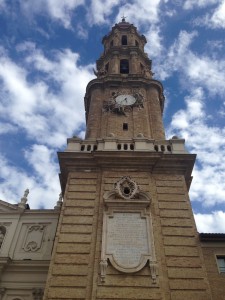
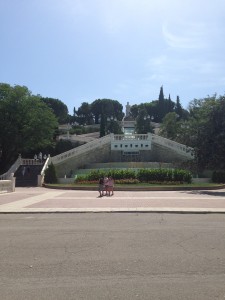
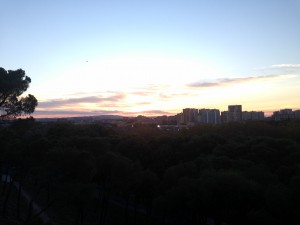
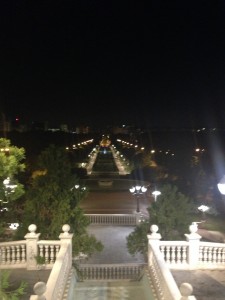
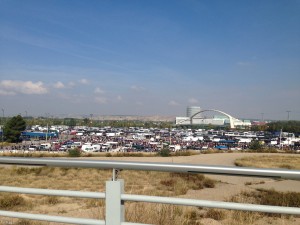
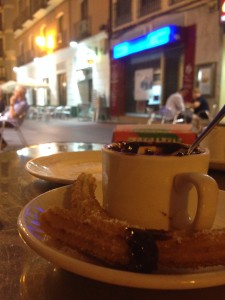
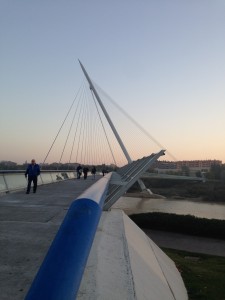
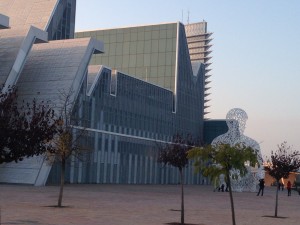
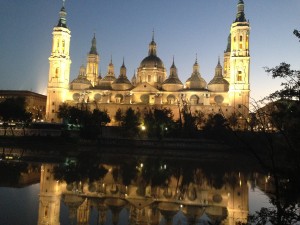
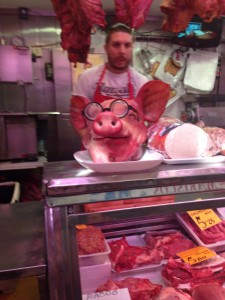
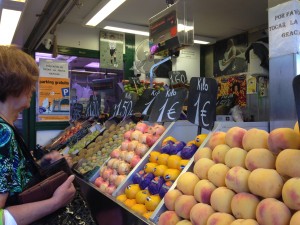
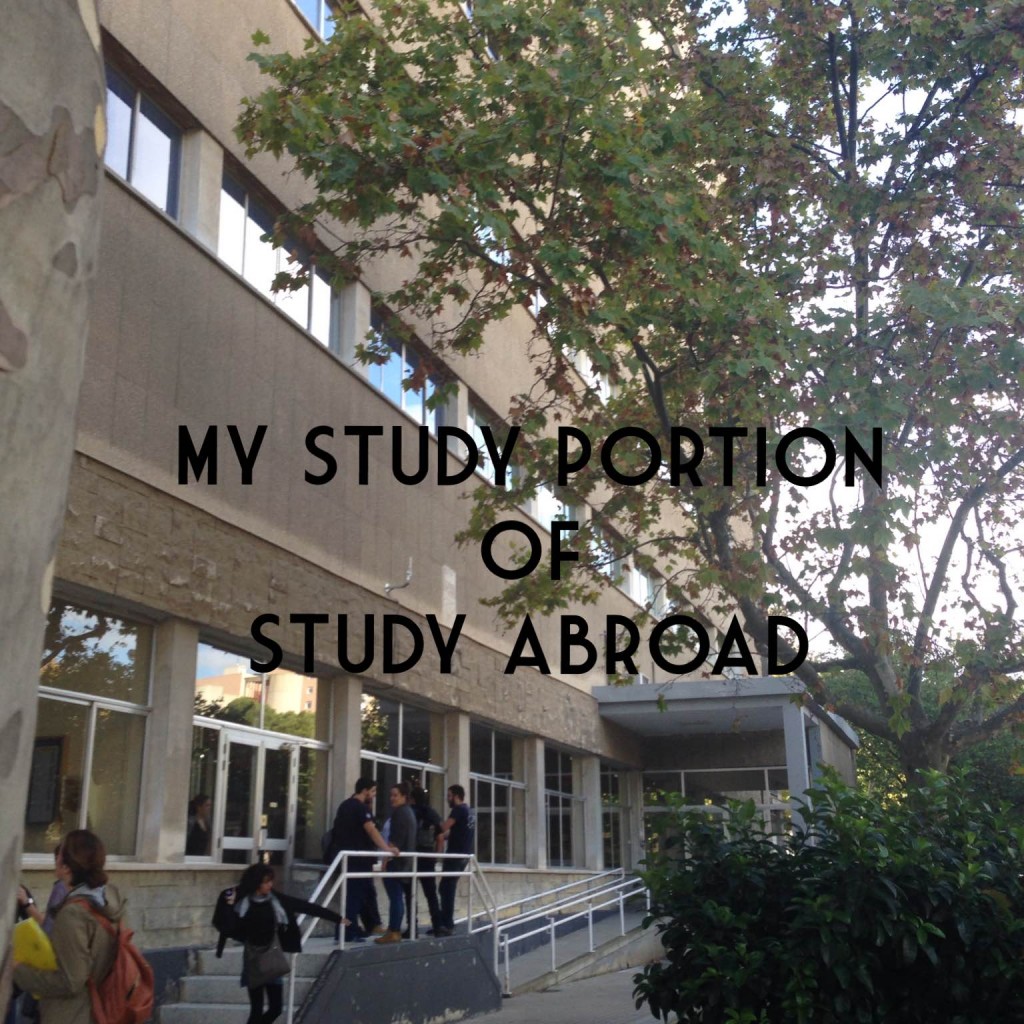
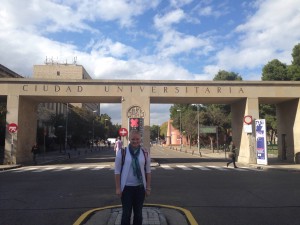
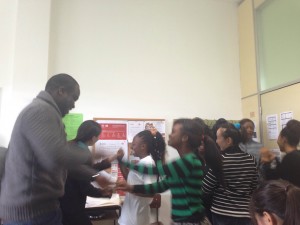
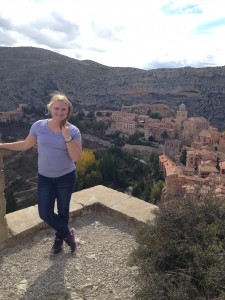
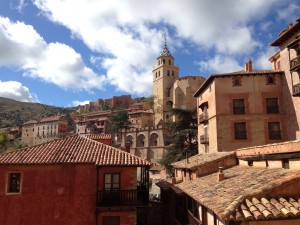
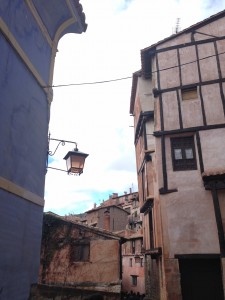
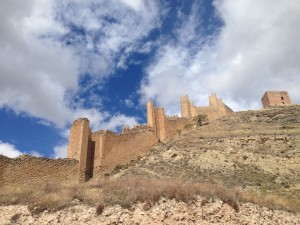
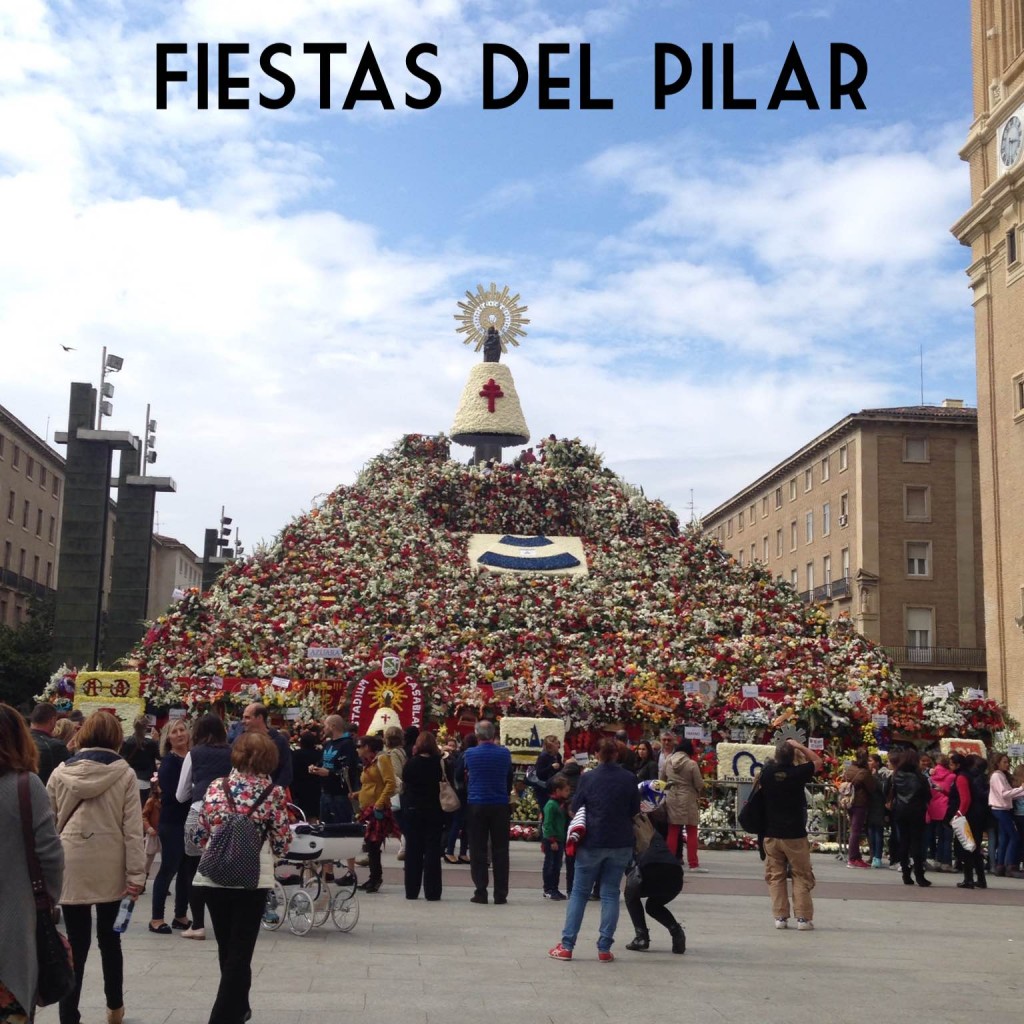
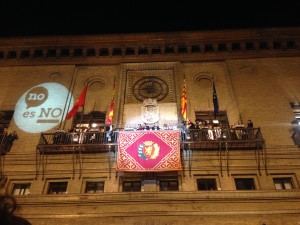
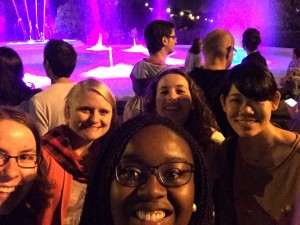
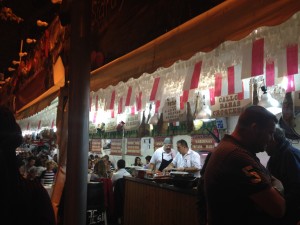
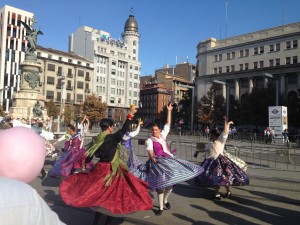
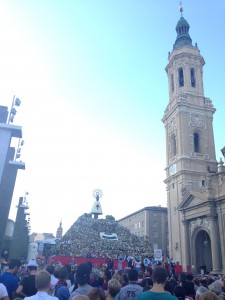
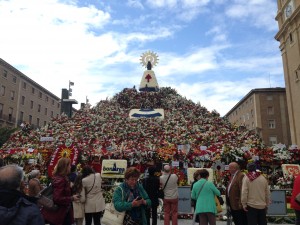
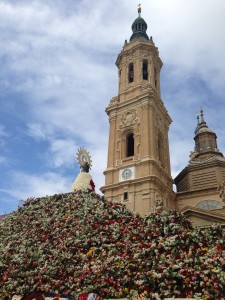
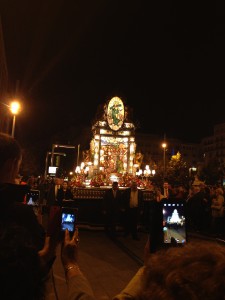
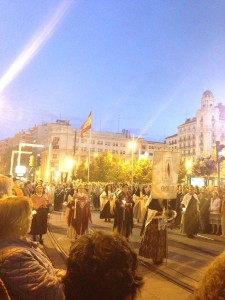
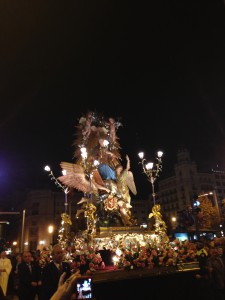
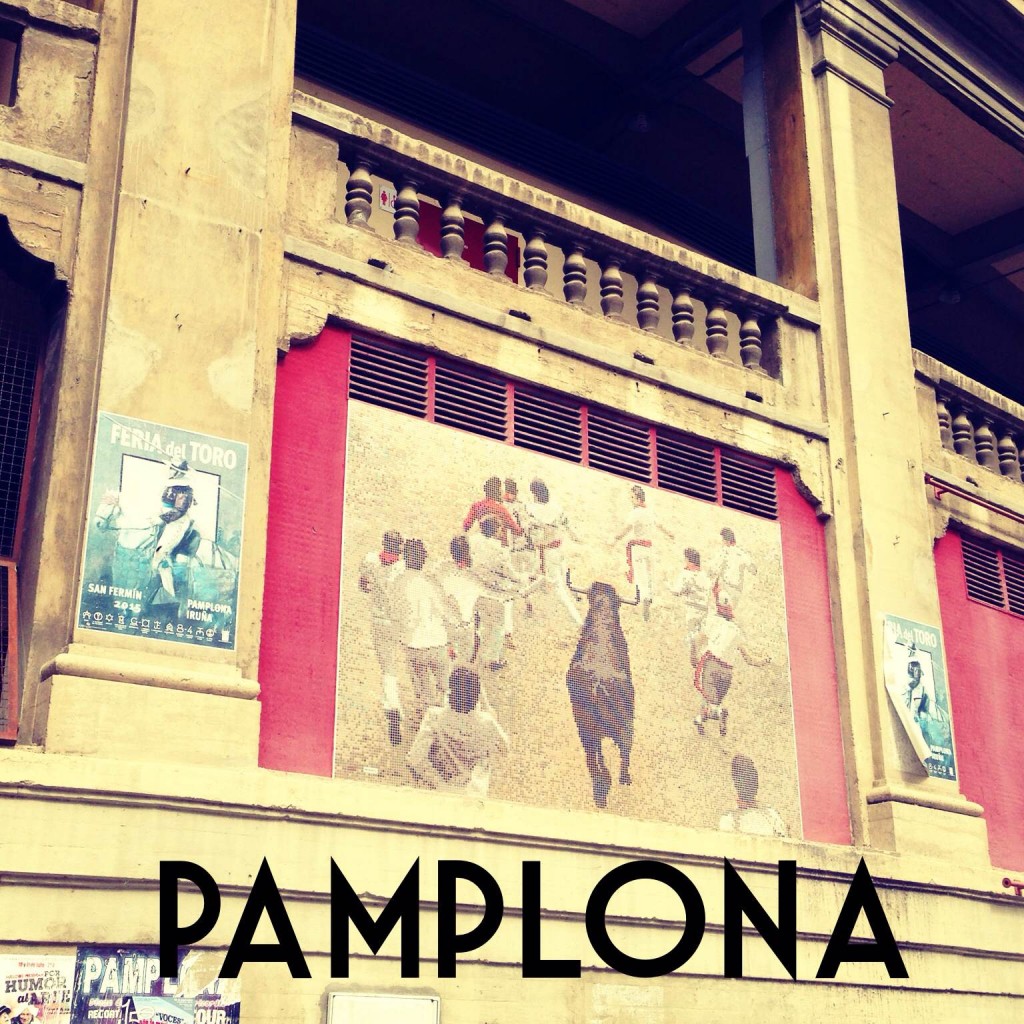
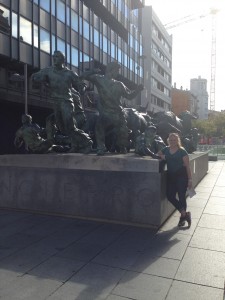
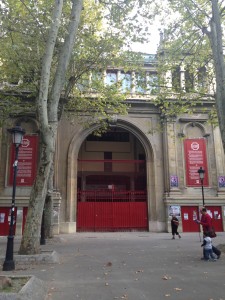
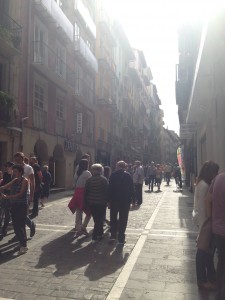
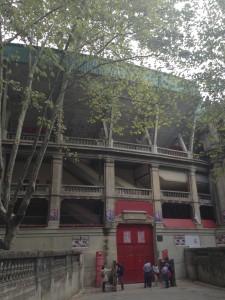
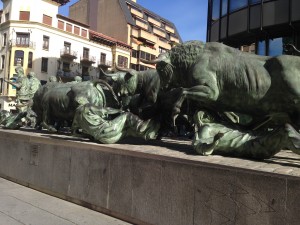
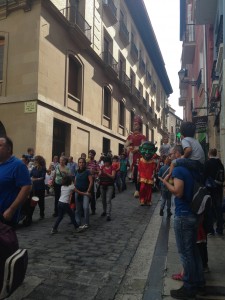
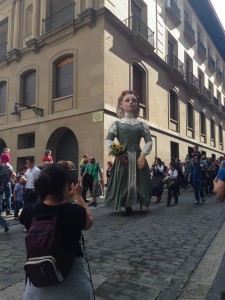 to encounter a festival while we were in Pamplona. After some research, I found out that it was called the Fiestas de San Fermin Txikito which took place Friday through Sunday. This festival included music, concerts, activities, and much more. We walked into (quite literally) the festival in the morning when there was a parade of the “gigantes y cabezudos”. “Gigantes y cabezudos”, popular in Spanish festivals and parades, are giants and big heads that are worn during festivals. They usually wear traditional clothing and commemorate historical and acclaimed people. It was interesting to see this and hear everyone singing while a parade of sorts was going on. We picked a good day to visit Pamplona!
to encounter a festival while we were in Pamplona. After some research, I found out that it was called the Fiestas de San Fermin Txikito which took place Friday through Sunday. This festival included music, concerts, activities, and much more. We walked into (quite literally) the festival in the morning when there was a parade of the “gigantes y cabezudos”. “Gigantes y cabezudos”, popular in Spanish festivals and parades, are giants and big heads that are worn during festivals. They usually wear traditional clothing and commemorate historical and acclaimed people. It was interesting to see this and hear everyone singing while a parade of sorts was going on. We picked a good day to visit Pamplona!